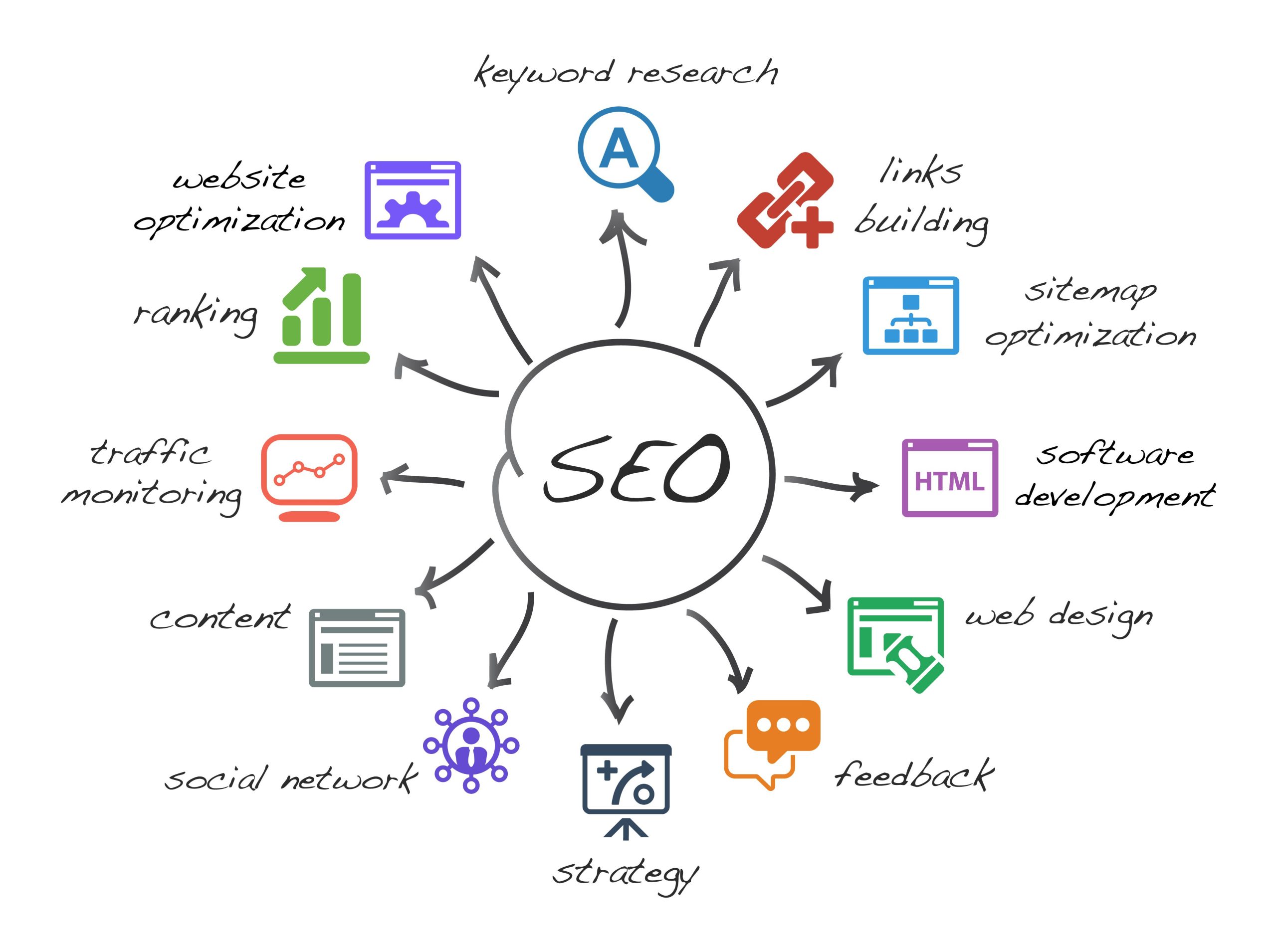Search Engine Optimization (SEO) is the process of improving a website’s visibility and ranking in search engine results pages (SERPs). It involves various techniques and practices aimed at attracting organic (non-paid) traffic to a website.
Why is SEO important?
With millions of websites competing for attention on the internet, it is crucial for businesses and website owners to optimize their content and web pages for search engines. Here are a few reasons why SEO is important:
Increased visibility: SEO helps websites rank higher in SERPs, increasing their visibility to potential visitors.
Targeted traffic: SEO allows businesses to target specific keywords and phrases relevant to their industry, bringing in qualified leads.
Improved user experience: SEO involves optimizing website structure, navigation, and content, making it easier for visitors to find what they’re looking for.
Long-term results: Unlike paid advertising, SEO efforts can provide long-lasting benefits and continuous organic traffic.
SEO Best Practices
1. Conduct keyword research
Keyword research is the foundation of any successful SEO strategy. Identify relevant keywords and phrases that your target audience is likely to search for. Tools like Google Keyword Planner can help you discover popular keywords, search volume, and competition level.
2. Optimize on-page elements
On-page optimization involves optimizing various elements within your website to improve its search engine visibility. This includes:
Title tags: Use unique, keyword-rich titles for each page to accurately describe its content.
Meta descriptions: Write compelling meta descriptions to entice users to click on your website in search results.
URL structure: Create clean, readable URLs that include relevant keywords.
Headings: Use H1, H2, and H3 tags to structure your content and signal to search engines the importance of each section.
Image alt tags: Include descriptive alt tags for images to help search engines understand their content.
3. Optimize website speed
Website speed is a critical factor in user experience and SEO. Slow-loading websites can lead to higher bounce rates and lower rankings. Optimize your website’s speed by compressing images, reducing server response time, and minifying CSS and JavaScript files.
4. Create high-quality content
Creating unique, informative, and engaging content is essential for SEO success. Write articles, blog posts, and landing pages that provide value to your audience. Make sure your content is easily readable, well-structured, and optimized with relevant keywords.
5. Build quality backlinks
Backlinks are an important ranking factor for search engines. Focus on obtaining high-quality backlinks from reputable websites in your industry. You can achieve this through guest blogging, reaching out to influencers, or creating shareable content that other websites would naturally link to.
6. Optimize for mobile
With the increasing use of mobile devices, optimizing your website for mobile is crucial. Ensure your website is mobile-friendly and provides a seamless user experience across different screen sizes. Responsive web design and fast-loading pages are key for mobile optimization.
7. Monitor and analyze performance
Regularly monitor your website’s performance using tools like Google Analytics. Analyze key metrics such as organic traffic, keyword rankings, bounce rates, and conversion rates. This data will help you identify areas for improvement and track the success of your SEO efforts.
8. Stay updated with SEO trends
SEO is a constantly evolving field, so it’s important to stay updated with the latest trends and algorithm changes. Follow industry blogs, attend webinars, and engage with SEO communities to stay ahead of the curve. This will ensure your strategies remain effective and yield positive results.
Conclusion
Implementing SEO best practices is crucial for businesses looking to maximize their online visibility and attract relevant organic traffic. By conducting thorough keyword research, optimizing on-page elements, creating high-quality content, and staying up to date with industry trends, you can enhance your website’s visibility and ultimately drive more qualified traffic to your business.
